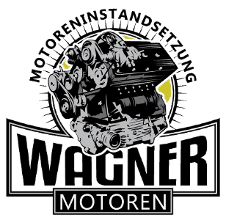In the first place one thing is certain: you cannot avoid every engine failure. In the case of material defects, for example, even the best care is of no use. But basically, the better you look after your engine, the longer you will enjoy it. We have collected some tips and hints for you that can delay or even avoid engine damage.
The right spark plug does the trick!
Your engine has poor throttle response, reduced performance, engine stuttering, stuttering, dropouts or engine knocking? Then the problem here could be worn spark plugs. Of course you can find the replacement interval for the spark plugs in your operating instructions or in the service booklet. Typical change intervals are after 30,000 and 60,000 kilometers. Precious metal spark plugs made of platinum have a longer shelf life. These last about 60,000 kilometers and are therefore twice as long as standard spark plugs. Spark plugs made of iridium have an even longer service life than platinum plugs. This metal can withstand the high loads during ignition the longest. Therefore Iridium spark plugs are state of the art. The replacement interval for these spark plugs is around 100,000 kilometers.
It is important that no random spark plugs are installed in a car! The spark plugs must be of the same type as the old ones. If you use spark plugs that do not meet the manufacturer's specifications when changing, this can lead to problems. Consequently this means that the car no longer runs smoothly and engine damage can occur. However, change spark plugs and avoid engine damage!
Cooling water level and frost protection - what do you have to consider?
The cold season poses many risks to the engine of your vehicle. Freezing temperatures with ice and snow can cause cooling water to freeze. You should therefore take precautions in good time and make the coolant frost-proof. Because your engine still needs cooling even in cold temperatures. If the cooling water is frozen, the motor can no longer be cooled sufficiently. Make sure that there is always sufficient coolant in the radiator. Too little coolant can lead to the engine overheating. You can fill the container with normal tap water or, better still, with distilled water to prevent calcification.
You can buy antifreeze as a concentrate and just mix it with the cooling water. But beware! Too much antifreeze can be harmful. The other option is therefore to get ready-mixed coolant from a professional. We recommend the advice of a specialist workshop on this subject. Avoid engine damage: Protect your engine properly! Please do not hesitate to contact us.
Oil change intervals and oil level checks
To ensure that you can enjoy your engine for a long time, it is extremely important to take care of it. In any case, you should observe the intervals for changing an oil. You can find information on this in the operating instructions for your vehicle. As a rule, the manufacturers prescribe a change between 20-30,000km or the oil should be changed after 24 months at the latest. The following applies here: The limit that is reached first determines the interval.
What happens in the oil?
What is very often not taken into account, however, is that the manufacturers assume "normal operation" (mix of short and long distances as well as motorway journeys). If you deviate from this normal operation in your driving behavior and only drive short distances, much more condensation forms that is not boiled off. Furthermore, the wear is higher with frequent cold starts and more abrasion forms in the oil and filter. This greatly reduces the lubrication performance. In this case, you should change the oil more frequently to avoid engine damage, contrary to the manufacturer's instructions!
Change the oil filter
Another point to keep in mind is the oil filter. You also have to replace this every time you change the oil, as this is where solids accumulate. In an engine with a saturated filter, the oil pump therefore has to do heavier work, which consequently uses more fuel. In addition, the oil is no longer filtered cleanly and bypassed the filter unfiltered through a bypass duct. Suspended particles and abrasion then act like an abrasive. This leads to a very high level of wear and tear up to major engine damage.
Oil level check
You should also check the oil level regularly, as even the most modern engines use small amounts of oil. If you drive with too little oil, you run the risk of major engine damage. When the engine is running, there must always be a permanent oil pressure for lubrication. Even if the red oil pressure control lamp lights up briefly due to a lack of oil, the engine can be damaged, which can result in consequential damage. We recommend that you seek advice from a specialist workshop on this subject. Protect your engine and avoid engine damage! Please do not hesitate to contact us.
Toothed belt change
High-performance components work in your engine, such as the crankshaft, camshaft and pistons. So that these components all harmonize perfectly with one another, they must be optimally connected to one another. The toothed belt is installed on your engine for this connection. With the help of a tooth-shaped surface, this ensures perfect cohesion of the components. The components required for the drive, such as the camshaft, the water pump and the injection pump, are driven via the toothed belt. Like any mechanical component, the material of your timing belt also wears out over time. We therefore strongly recommend that you observe the specified change interval. You can find this in the service booklet or the operating instructions for your vehicle. As a rule, the replacement interval for your timing belt is between 100,000 and 200,000 kilometers.
Once the timing belt is torn, it will result in major engine damage. The various components no longer work together and the pistons hit the open valves. These bend or, in the worst case, tear off. In conclusion, we recommend the advice of a specialist workshop on this subject to avoid engine damage.
Maintenance and replacement of the timing chains
As an important part of the engine, the timing chain was considered to be virtually maintenance-free for many years. Our customers experience all the time that this is unfortunately not the case today. However, engine damage caused by a jumped timing chain can be avoided. How do we explain in the following text.
The timing chain
In an internal combustion engine, all components must run in sync with one another and harmonize with one another. In order for the camshaft with the intake and exhaust valves to act in perfect timing with the crankshaft and the pistons, all parts must be deployed at a specific point in time. The timing chain takes on this task. It consists of many small chain links that fit perfectly on the gears of the required components. In contrast to a toothed belt, the timing chain is made of metal and can transmit more power with a narrower design. There are prescribed or recommended change intervals for toothed belts. For timing chains, on the other hand, there are no replacement intervals or recommendations from the manufacturer.
Skipping of the timing chain
Due to the enormous physical forces that act on the timing chain, the timing chain elongates over time. Deceptively, this is not directly noticeable. At some point the elongation has progressed so far that it skips. I. E. individual teeth of the timing chain skip on the gears. This can then lead to major engine damage. The timing no longer fits and the opened valves hit the piston and in extreme cases can tear off. This destroys the entire combustion chamber. The damage can then be so great that the entire engine can no longer be overtaken.
Components of the timing chain
The timing chain itself also includes other wear parts that are not without maintenance and are regularly changed by us. These parts are usually made of plastic and are therefore much more vulnerable and short-lived than the timing chain itself. These are the slide and tensioning rails, chain tensioners and chain wheels / pulleys. Problems can also arise here: from aging, abrasion and material fatigue. Neglected maintenance and many short trips also play a role.
Längung / Defekt an Steuerketten erkennen
But how do you find out whether the timing chain is defective? Unfortunately, it must be said in advance that not every defect in the timing chain is noticeable. Most of the time, damage to the timing chain is indicated by rattling engine noises, especially during a cold start. However, this noise only lasts a few seconds and is difficult or even impossible to detect for normal users. Other noises such as rattling or clacking are noticeable above idle speed. (Compare https://www.mobile.de/magazin/artikel/steuerkette-probleme-nachteile-vorteile-funktion-29406?fbclid=IwAR0znnB7zvt_Uz0g2pFqK-x1saDFRduCYhyXW4dNkzIy4KqLA-UWHjr03fs Abruf: 27.03.20). Diagnostic devices can also detect chain elongation by comparing the crankshaft and camshaft sensors. However, since this is not part of the routine inspection, it must be checked explicitly. You should definitely ask your car mechanic about this.
Avoid timing chain damage
Our recommendations for timing chain motors are therefore:
Check for elongation
If you can hear clear noises or if a problem is detected via the diagnostic device, we recommend changing the timing chain: This is significantly cheaper than installing a complete engine. The timing chain is exposed to the greatest stress during the starting process. This means that vehicles that are started frequently (e.g. on many short journeys) come to us earlier with a timing chain damage than vehicles that are driven a lot on long journeys. Therefore, a check with a diagnostic device is recommended in any case, even well below 100,000 km. Have your car mechanic use the diagnostic device to check whether there is any elongation. However, this does not offer 100% security. Changing the timing chain at around 100,000 km is the safest option. However, this is not a cheap repair because the installation is very complex.
Oil change & oil level check
Pay close attention to punctual oil changes and check the oil level regularly.







